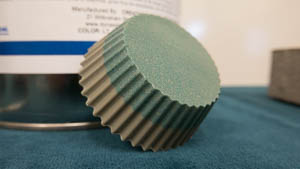0 items - $0.00
- No products in the cart.
|
Product Solutions of Creative Material Technologies, Ltd. |
|
Application methods include:
Application methods will depend upon the substrate characteristics, environmental demands, as well as the polyurea formulation and other site specific requirements.
For high volume applications such as secondary containment and roofing, the use of high pressure heated spray units are a good choice for applying large amounts of material. The coatings need to be formulated to the lowest possible viscosity to yield good flow properties for adequate spraying and final adhesion.
Warm spray is generally used for medium to large sized jobs. It combines the cost effectiveness of lower cost equipment and safety of lower pressure spray but requires materials that are formulated to be processed at lower temperatures, typically under 140℉ (60℃)
Another very useful application method is cold spray. This method of application puts more demand on the formulation materials since there is little or no assist in reducing the fluid viscosities through heating. Therefore, low viscosities and flow properties must be formulated into the coating material.
In addition to the spray applications mentioned above, polyureas can be formulated to allow application by brush-on/roll-on, caulking (or extruding), troweling, and casting methods. The brush-on/roll-on method provides a very useful alternative to spray applications where spray applications are not feasible, for example in small tanks and pipes.
The use of caulk-grade materials formulated from polyureas are receiving a great deal of attention for outdoor use in garages and sidewalks where the direct attack of UV light and winter chemicals produce a very aggressive environment for sealant products. The viscosities and gel times must be properly formulated to yield easy application by the maintenance personnel or contractors.

High Pressure Hot Spraying

Warm Spraying

Low Pressure Cold Spraying

Brush-On

Roll-On

Extrusion

Troweling

Casting
See Previous:
How Dynasolv™ Polyurea is SuperiorSee Next:
Critical Issues DYNA-PRIME™ N-23 Water Chasing® Primerby Daniel
DYNA-PRIME™ N-23 Water Chasing® Primerby Daniel DYNA-PUR™ 7416BL Brushable Polyureaby Alex
DYNA-PUR™ 7416BL Brushable Polyureaby Alex Patch 'N Go™ (8010-TR)by David
Patch 'N Go™ (8010-TR)by David